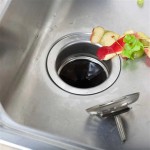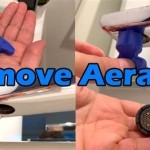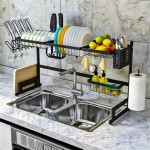Understanding the Components of a Sink Drain: An Essential Guide
Sink drains are essential plumbing fixtures that facilitate the removal of wastewater from sinks. They consist of various parts working together to ensure smooth and efficient drainage. Understanding these parts is crucial for diagnosing issues, performing repairs, and selecting the right replacement components. This guide provides an in-depth exploration of the various components that make up a typical sink drain.
1. Drain Stopper: Controlling the Flow
The drain stopper is a pivotal component that controls the flow of water through the sink drain. Its primary function is to plug the drain opening, allowing water to accumulate in the sink for purposes such as washing dishes or filling a basin. Common types of drain stoppers include:
- Push-button stoppers: These stoppers feature a button that, when pressed, lifts a rubber plug to block the drain opening. Releasing the button allows water to flow through the drain.
- Lift-and-turn stoppers: These stoppers operate by lifting a lever or handle, which raises a plug to close the drain opening. Turning the lever or handle in the opposite direction allows water to flow freely.
- Pop-up stoppers: These stoppers are often found in bathroom sinks. A chain connected to a lever or handle controls the movement of a plug that rises and falls to block or open the drain.
- Basket strainers: These stoppers feature a basket-like design with holes that allow water to pass through while catching debris that may clog the drain. They are typically used in kitchen sinks.
2. Drain Body: The Foundation of the System
The drain body, also known as the drain tailpiece, is the central part of the sink drain system. It connects the drain stopper to the drainpipe and provides a secure and leak-proof connection. Drain bodies are typically made of durable materials such as brass, stainless steel, or PVC. They come in various sizes and shapes to accommodate different sink sizes and drainpipe configurations.
The drain body comprises several key features:
- Drainpipe connection: This is the part of the drain body that connects to the drainpipe, typically using a threaded or slip-on connection.
- Stopper connection: This is the part of the drain body that accepts the drain stopper, ensuring a secure and watertight seal.
- Overflow tube connection: Some drain bodies have an overflow tube connection, which is a small opening that allows excess water to drain away if the sink fills beyond the overflow level.
3. Drainpipe: Guiding Wastewater to the Sewer System
The drainpipe is the conduit that carries wastewater from the sink drain to the main sewer system. It is typically made of PVC, ABS, or cast iron and comes in various diameters to accommodate the flow rate of wastewater. The drainpipe is connected to the drain body via a threaded or slip-on connection.
The drainpipe may include various fittings and components, such as:
- Elbows: These fittings change the direction of the drainpipe, allowing it to navigate obstacles and connect to the sewer system.
- Tees: These fittings allow the drainpipe to branch off, connecting multiple fixtures to the same sewer line.
- Traps: These components are essential for preventing sewer gases from entering the home. They create a water seal that blocks the passage of gases while allowing wastewater to flow freely.
4. Accessory Components: Enriching Functionality
In addition to the core components, sink drains may also include various accessory components that enhance their functionality and improve the overall experience. These components include:
- Drain covers: These decorative covers are placed over the drain opening to enhance the aesthetic appeal of the sink. They are often made of metal, porcelain, or plastic.
- Strainers: These small, mesh-like devices are placed over the drain opening to catch food particles, hair, and other debris that could clog the drain.
- Overflow plates: These plates cover the overflow opening in the sink, preventing debris from entering the overflow tube and clogging the drain.
- Cleaning tools: Specialized tools are available for cleaning and maintaining sink drains, including drain snakes, plungers, and cleaning solutions.
Understanding the various components of a sink drain is essential for homeowners and DIY enthusiasts who want to perform basic repairs, troubleshoot issues, or upgrade their sink drainage system. Knowing the names and functions of these components will allow for more informed decision-making when selecting replacement parts, addressing problems, and maintaining a smooth and efficient sink drainage system.

Oatey Form N Fit 1 4 In Chrome Finish Plastic Sink Drain Pop Up Assembly Hc3522215 The Home

Keeney 1 4 In Push Button Bathroom Sink Drain Without Overflow Polished Chrome K820 76 The Home

Oatey 1 2 In X 8 4 Plastic Slip Joint Sink Drain Tailpiece With High Line Branch Hdc9818 The Home
Sink Drain Hose 1 4 Sold Per Foot

Keeney 1 4 In Brushed Nickel Brass Universal Push Button Bathroom Sink Drain With Overflow West Valdosta Georgia Triple H Mobile Homes Parts And Service

Highcraft Bar Prep Sink 1 7 8 2 4 Junior Duo Stainless Steel Drain Assembly With Stopper Wal Com

Single Sink Drain Kit 1 2 In Or 4 D Pvc

A Parts Of The Sink Drain Line 1 Faucet And Handles 2 Scientific Diagram

Trap Sink Parts Repair At Com

Highcraft Bar Prep Sink 1 7 8 2 4 Junior Duo Stainless Steel Drain Assembly With Stopper Wal Com







